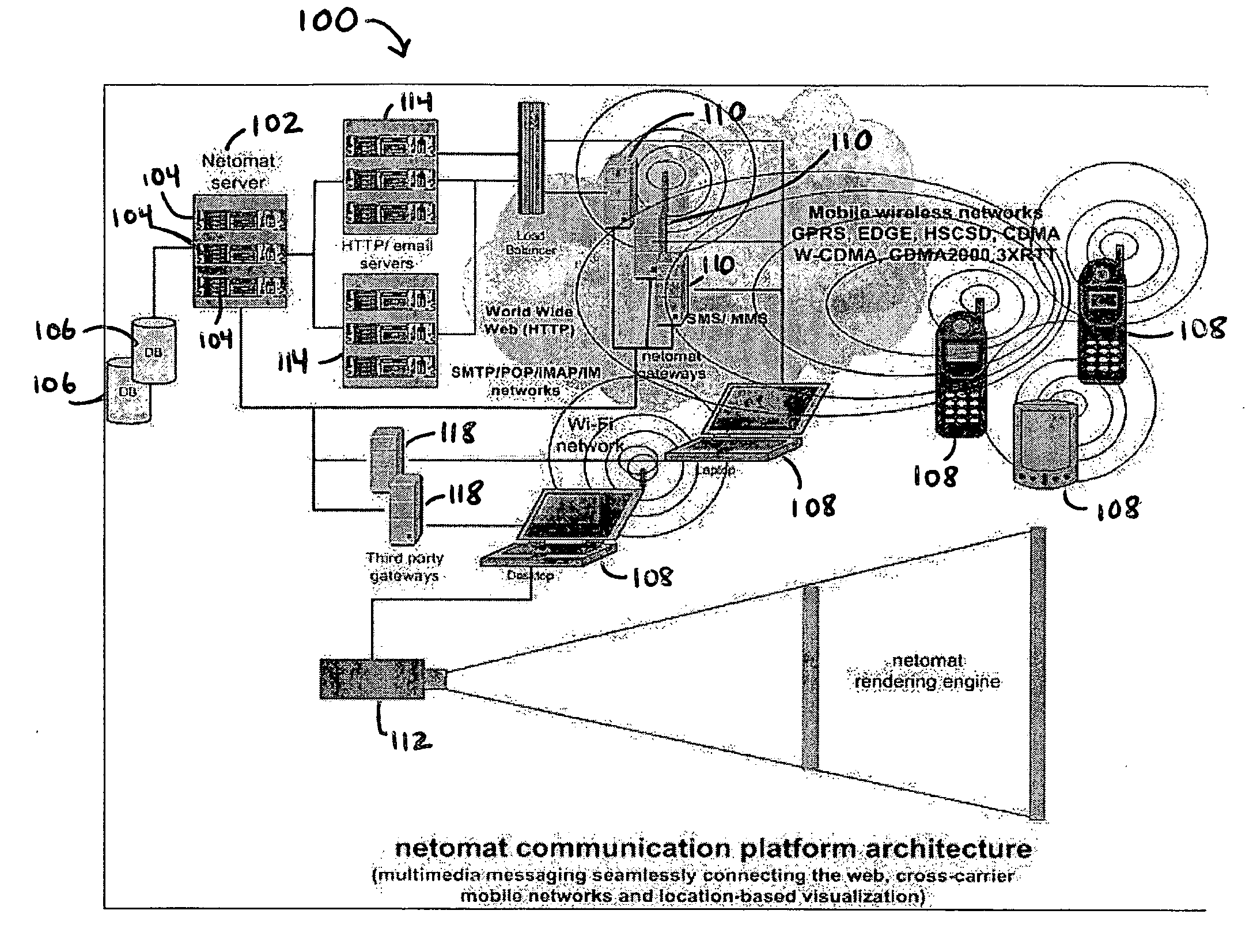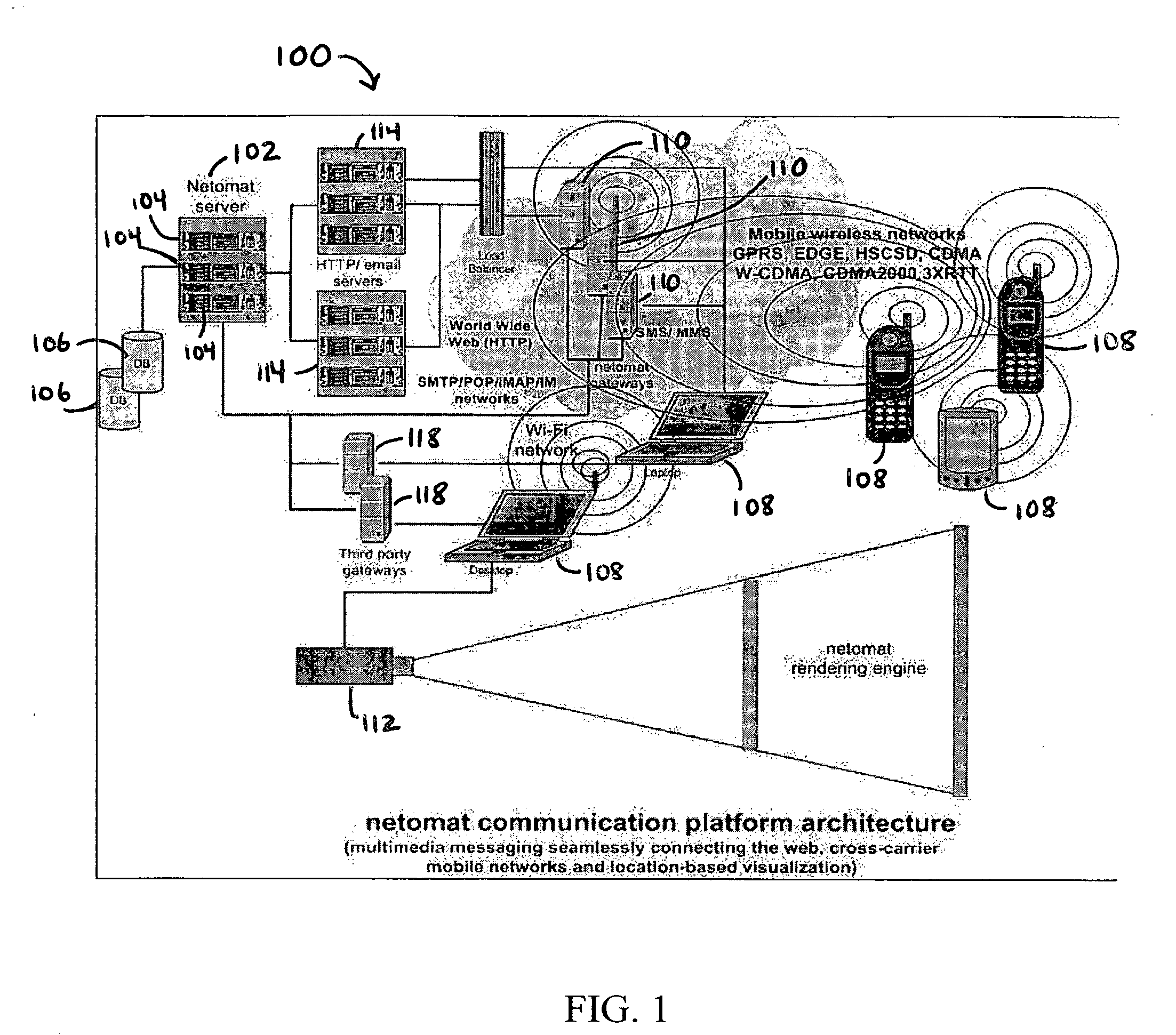Mobile messaging system and method
a mobile device and messaging technology, applied in the field of mobile messaging systems and methods, can solve the problems of inability to communicate multimedia (e.g., text, images, video and audio) with mobile devices, cumbersome and in many cases impossible, and the ability of mobile users to collaborate on an ongoing basis through the use of mms, etc., to facilitate multimedia collaboration, improve the message experience provided to a mobile user, and increase the efficiency of content delivery and/or networking reliability
- Summary
- Abstract
- Description
- Claims
- Application Information
AI Technical Summary
Benefits of technology
Problems solved by technology
Method used
Image
Examples
Embodiment Construction
[0032] Embodiments of the invention relate to a device- and network-agnostic multimedia messaging environment that provides a seamless experience for an end user, irrespective of whether the user is messaging from a mobile, desktop, set-top or other device. Within this environment, devices can message one another across different networks and / or protocols such as, for example, the Web (HTTP), SMTP / POP / IMAP, SIP, CDMA and GSM (GPRS, EDGE).
[0033]FIG. 1 shows an embodiment of a system 100 that includes server(s) 102 (each comprising one or more server interfaces 104 and memory 106) and user equipment 108 such as, for example, one or more mobile devices such as cellular phones and personal digital assistants (PDAs) and / or non-mobile devices such as desktop computers. System 100 also includes gateways 110, rendering engine(s) 112, HTTP / e-mail servers 114, load balancer(s) 116, and third-party gateways 118. For example, embodiments of the present invention may allow a user of a mobile or...
PUM
 Login to view more
Login to view more Abstract
Description
Claims
Application Information
 Login to view more
Login to view more - R&D Engineer
- R&D Manager
- IP Professional
- Industry Leading Data Capabilities
- Powerful AI technology
- Patent DNA Extraction
Browse by: Latest US Patents, China's latest patents, Technical Efficacy Thesaurus, Application Domain, Technology Topic.
© 2024 PatSnap. All rights reserved.Legal|Privacy policy|Modern Slavery Act Transparency Statement|Sitemap



